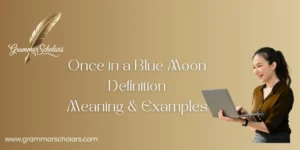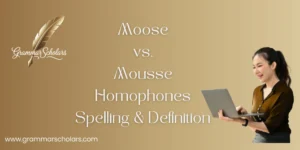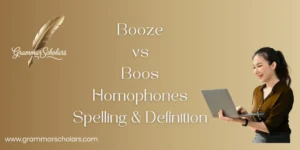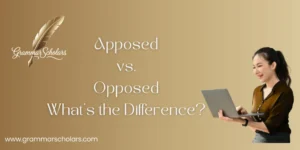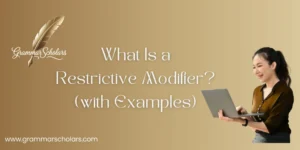In English, fair and good may seem alike but carry different meanings, especially when giving feedback. Fair implies doing just enough, while good exceeds basic expectations. Think of it this way: fair is the minimum to get by, but good is a step above, showing quality. This slight difference becomes vital in daily conversations, especially when clarity matters. Fair vs. Good is a key when trying to rate performance in a way that reflects true effort.
From experience in teaching, choosing between fair and good changes how feedback is received. Fair shows presence, but good signals progress. These two words can change tone, precision, and intent in reports or reviews.
Once you understand this, you don’t just improve vocabulary you improve how you express success, standards, and expectations.
When it comes to rating quality- whether it’s a product, service, performance, or even credit score- the words “fair” and “good” pop up everywhere. But what’s the real difference between these two? Is something that’s “fair” barely acceptable while “good” is reliably decent? Or do these terms overlap more than we think?
Definitions First: What Do “Fair” and “Good” Actually Mean?
Before jumping into comparisons, let’s get the definitions straight:
- Fair: Moderately good; acceptable but not impressive.
- Good: Of a high standard; satisfactory or above average.
According to Merriam-Webster, “fair” typically implies adequacy, not excellence. Think of it as something that meets the minimum standard.
In contrast, “good” implies satisfaction– something that performs well and meets or exceeds expectations.
Etymology Snapshot:
| Word | Origin | Historical Use |
| Fair | Old English fæger (“beautiful, pleasant”) | Evolved to mean “just,” “reasonable,” and “average” |
| Good | Old English gōd (“virtuous, desirable”) | Always had strong positive connotations |
So from the start, “good” has a richer, more affirmative tone, while “fair” feels more neutral or reserved.
Quality Spectrum: Where Do Fair and Good Fit?
One of the clearest ways to understand the difference between “fair” and “good” is to place them on a quality spectrum.
Visual Scale of Quality Ratings
nginx
CopyEdit
Poor < Fair < Good < Very Good < Excellent
On this scale:
- Fair is better than poor, but still closer to the lower end.
- Good is considered solidly mid-to-high quality.
Think of “fair” as a passing grade– not failing, but not something you’d brag about. “Good,” on the other hand, feels confident, competent, and stable.
Subjectivity in Language: Why “Fair” or “Good” Depends on Who’s Speaking
Language is nuanced, and perception plays a huge role. What’s “good” to one person might only be “fair” to another. This subjectivity can vary based on:
Personal Factors:
- Cultural background
- Education
- Age or generation
- Industry-specific standards
For example:
- A “fair” performance in a local talent show might be considered “good” by a novice, but not by a seasoned judge.
- In British English, “fair” can sometimes carry a more positive tone, like in “a fair chance” or “a fair offer.”
Tone Implications:
- Saying “He did a fair job” sounds less enthusiastic than “He did a good job.”
- Yet, “That’s fair” can also mean reasonable or just.
It’s all in the context and delivery.
Everyday Ratings: What Do “Fair” and “Good” Signal in Real Life?
You’ll find these words in many rating systems, especially online. Let’s break down how each term is commonly used across daily interactions.
Common Rating Systems
| Context | Fair | Good |
| Customer Reviews | 2-3 stars (Meh) | 4 stars (Satisfying) |
| Product Conditions | Signs of wear, but functional | Gently used, works like new |
| Employee Reviews | Needs improvement | Consistently meets goals |
| School Grading | C (70-79%) | B (80-89%) |
Fair often indicates minimum acceptable performance, whereas good suggests reliable and above-average performance.
Product Descriptions: “Fair Condition” vs. “Good Condition”
Let’s take tech as an example. When shopping for refurbished electronics, the difference between “fair” and “good” condition can impact your experience.
What It Means in Retail:
| Condition | Description |
| Fair | Device shows noticeable wear (scratches, dents), is fully functional, battery may degrade quicker |
| Good | Light scratches only, solid performance, battery works well, all features intact |
Real-World Example:
- Apple Certified Refurbished: Devices are sold only in good or excellent condition, not fair.
- eBay Sellers: A “fair” laptop might save you $100, but expect cosmetic issues and potentially a shorter lifespan.
Shoppers often avoid “fair” unless price is a top priority.
Online vs. In-Store Descriptions: Why “Good” Isn’t Always Better
Here’s the catch: language can be misleading, especially in marketing.
Online Listings:
- Sellers often inflate ratings to sound better.
- “Good condition” may include fine print: “minor signs of wear and tear.”
In-Store Reality:
- Physical inspection allows better judgment.
- “Fair” items are usually clearly marked, like clearance sections.
Buyer Tip:
Always check retailer standards. What one seller calls “good,” another might list as “acceptable.”
Side-by-Side: Practical Scenarios Comparing Fair and Good
Here’s how the two stack up in real-world decisions.
Comparison Table
| Scenario | Fair | Good |
| Used Car | Cosmetic wear, 120K+ miles, older model | Moderate mileage, well-maintained |
| Apartment | Dated interior, decent location | Updated appliances, good lighting |
| Resume | Meets minimum job criteria | Shows above-average qualifications |
| Customer Service | Gets the job done, no extra effort | Friendly, efficient, and helpful |
In each case, “good” implies a better overall experience– more reliability, higher satisfaction.
Financial Terms: Fair vs. Good Credit (and Beyond)
Credit scores are one place where these terms carry real monetary consequences.
FICO Credit Score Range
| Credit Rating | Score Range |
| Poor | 300-579 |
| Fair | 580-669 |
| Good | 670-739 |
| Very Good | 740-799 |
| Excellent | 800-850 |
A jump from fair to good can reduce your loan interest rate by 1-2%. That’s a difference of thousands of dollars on mortgages or car loans.
In investment language:
- Fair value: A neutral evaluation- what something is worth.
- Good return: A positive, above-market gain.
Understanding these terms helps you make better financial decisions.
Consumer Expectations: What Buyers Think They’re Getting
Language shapes perception, and the expectations tied to “fair” or “good” can impact how satisfied someone feels post-purchase.
Psychology of Descriptive Language:
- “Fair” suggests lower expectations. If the product is better than expected, the buyer is pleasantly surprised.
- “Good” sets a higher bar– and if unmet, leads to disappointment.
Key Insight:
The way a product is described influences both:
- Initial purchase decision
- Post-purchase satisfaction
Words build trust- or erode it.
When “Fair” Can Be Misleadingly Positive
Sometimes, “fair” is used to soften criticism.
Examples of Euphemism:
- “That’s a fair attempt” = You didn’t do great, but I won’t say it outright.
- “We had a fair turnout” = Attendance was lower than hoped.
- “He’s a fair leader” = Not bad, but not great either.
While polite, these uses often hide dissatisfaction under a neutral tone.
Linguistic Shades: Are There Times When “Fair” = “Good”?
Yes- but it depends on context and phrasing.
Situations Where “Fair” Can Be Positive:
- “That’s a fair offer.” → Seen as reasonable and just.
- “Fair play” → Implies ethical behavior.
- “Fair chance” → Suggests equal opportunity.
In these uses, fair doesn’t mean low quality. It means balanced, honest, or appropriate.
Language in Motion: Why This Distinction Matters in Communication
The words you choose can shape tone, clarity, and impact.
Use the Right Word When:
- Giving feedback: “Fair” might be kinder, but “good” is more encouraging.
- Writing reviews: Be specific- explain why you rated something fair or good.
- Making purchases: Know what the descriptors mean before buying.
Precision matters. Especially in written communication.
Final Comparison Table: Fair vs. Good at a Glance
| Feature | Fair | Good |
| Tone | Neutral to slightly negative | Positive |
| Performance | Meets minimum expectations | Above average |
| Perception | Mediocre | Solid, reliable |
| Financial Use | Credit risk is higher | Creditworthiness is stable |
| Consumer Impact | Low trust or value | Higher satisfaction |
Precision in Language Helps You Make Better Choices
Whether you’re buying a used laptop, leaving a restaurant review, or applying for a loan, knowing the difference between “fair” and “good” can have real consequences.
“Fair” isn’t necessarily bad- it’s acceptable. But “good” tells you something more- it’s dependable, better quality, and usually worth a little more.
So next time you’re reading ratings or writing one, ask yourself:
- Am I just okay with this, or am I satisfied?
- Does this meet the bar, or rise above it?
The difference may sound small, but it speaks volumes.
Final Thoughts
Language holds subtle power. When we describe something as fair or good, we’re not just assigning it a label- we’re communicating expectations, value, and trust. The distinction between fair vs. good isn’t just academic; it affects how we shop, review, negotiate, and even how we see ourselves.
In everyday use, fair typically signals something acceptable but uninspiring. It works. It functions. It’s not broken, but it also doesn’t impress. Good, on the other hand, conveys a sense of satisfaction and dependability. It tells you that what you’re looking at meets your standards- and often goes a little beyond.
This difference matters in everything from consumer electronics and employee evaluations to credit scores and communication tone. Even in personal relationships and everyday conversation, the words we choose reveal more than we think.
Next time you’re tempted to describe something as “fair,” pause. Is it just barely okay, or does it deserve a higher mark? And if you label something as “good,” make sure it earns that trust.
Being precise with language isn’t about being picky- it’s about being clear, honest, and impactful. Because clarity builds confidence, and confident choices start with the right words.
FAQs
What’s the main difference between fair and good?
The core difference lies in quality and perception. Fair means something is minimally acceptable, functional, but not impressive. Good signals a higher standard, implying that it not only works but also satisfies expectations. While both are positive compared to poor or bad, “good” typically leads to higher trust and satisfaction.
Can fair and good mean the same thing in some cases?
Sometimes, yes- but only in context. In casual speech, “fair” might be used to mean “decent” or “reasonable,” such as “That’s a fair deal.” However, in formal evaluations- like credit ratings, product conditions, or performance reviews- “fair” always ranks below “good.” The intent and context make all the difference.
Is a fair condition worth buying?
It depends on what you’re buying and your priorities. A product in fair condition might offer a better price, but expect visible wear, lower performance, or reduced lifespan. For high-value items like electronics or cars, “good” condition is often worth the extra investment. Always read condition notes carefully before purchasing.
Why do companies use the term ‘fair’ instead of ‘poor’?
“Fair” sounds more neutral and less negative than “poor.” It communicates that something is still functional but doesn’t meet higher standards. Companies use it as a marketing-safe way to suggest lower quality without alarming potential buyers. It offers honesty with a softened edge, helping to manage customer expectations.
How does fair vs. good affect your credit score?
Credit scores in the fair range (580-669) may result in higher loan rates and fewer approval options. In contrast, a good credit score (670-739) opens doors to lower interest rates, better credit cards, and stronger loan terms. The difference can save you thousands in interest over time.

